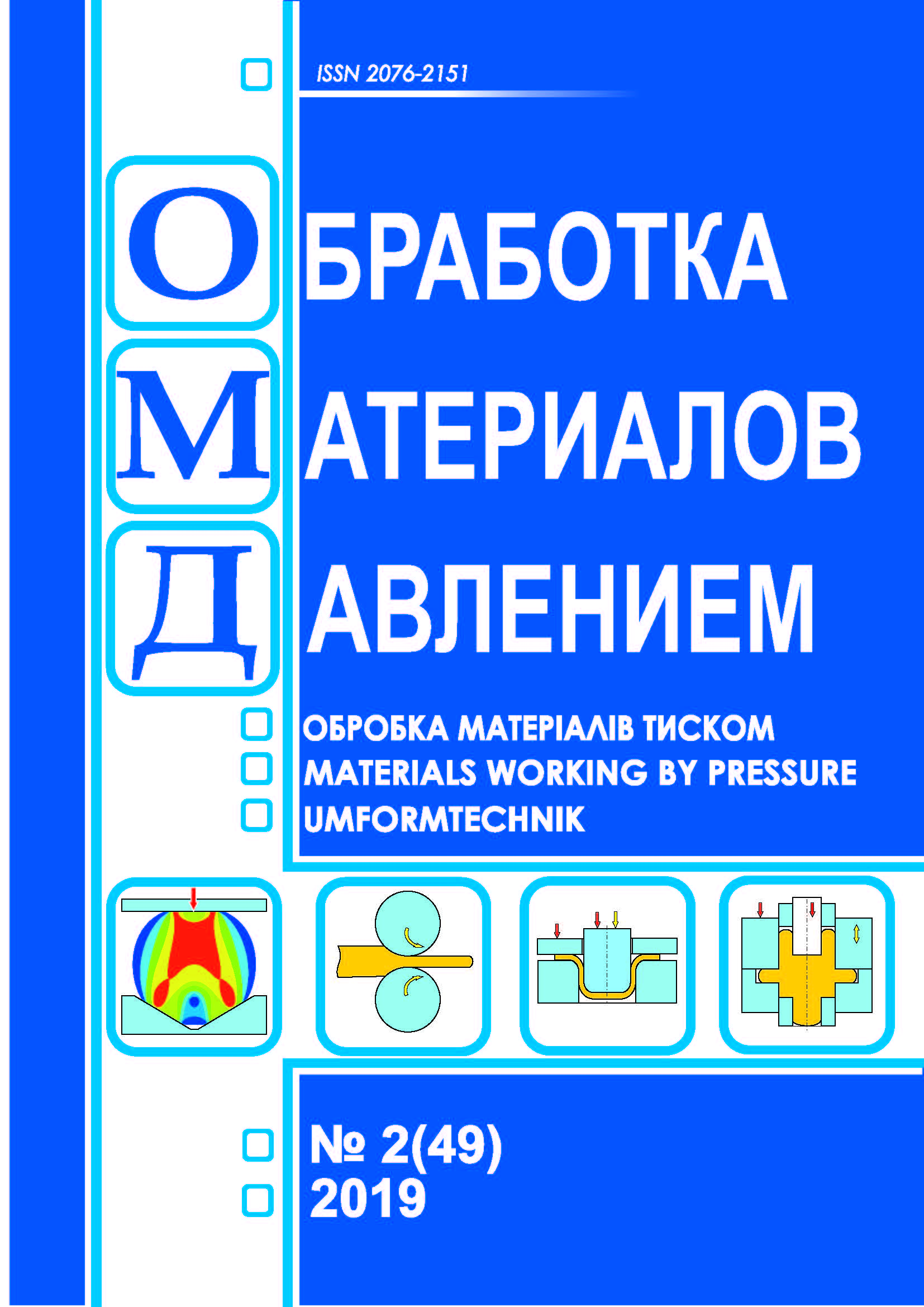Mechanical processes in a system with a submersible electric discharge chamber. Experiment and modeling
DOI:
https://doi.org/10.37142/2076-2151/2019-2(49)136Keywords:
electrical discharge in a liquid; mathematical modeling of the stamping process; shock waves; deformation of a sheet stock; ductility; impulse loadAbstract
Naryzhniy A. G., Taranenko M. Ye. Mechanical processes in a system with a submersible electric discharge chamber. Experiment and modeling // Material working by pressure. – 2019. – № 2 (49). - Р. 136-142.
The article is dedicated to development of the study methods of the thin-walled detail fabrication by electrohydraulic stampings job, as well as analysis of its regularities and particularities. It is considered technological system with one submersible camera. Are discussed the dynamic mechanical processes in pulsed technological heterogeneous system, including the electric discharge channel transforming into vapor-gas cavity, viscous- elastic technological liquid, elastic-plastic shell, hard technologic attachments. For analysis of the processes together used methods of the experimental study and mathematical simulation by numerical decision of the contact dynamic problems continuum mechanics. Are described particularities of the kinetics of processes. Are compared results of two methods. On the basis of modeling data system elements interaction, is given explanation of experimental results. Are made conclusions about adequacy of the mathematical model and accuracy of the simulation method. The results may be useful at development and optimization new, as well as modification existing technological equipment and parameter for the reason increasing of efficiency of the technological process and workmanship of the details.
References
Yutkin L.A. Electro–hydraulic effect and its application in industry. Leningrad: Mechanical Engineering. 1986, 253 p. (in Russian).
Krivtsov V.S., Naryzhny A.G. Mechano–mathematical modeling of technological systems. Technological systems. 2012, 4 (61), pp. 51–60. (in Russian).
Kosenkov V.M. The influence of the channel length of a high voltage discharge in water on the efficiency of plastic deformation of a cylindrical shell. Journal of Technical Physics. 2011, 81, 10, pp.133–139. (in Russian).
Mamutov A.V., Mamutov V.S. Computer simulation of electrohydraulic sheet metal forming. Nanodesign, technology and computer simulation: proc. of SPIE. 659, 65970Y. 2007, pp. 1–5.
Gimadeev M.M. Improving the methodology for calculating the energy parameters of a shock wave during a high–voltage electric discharge in water based on the thermophysical approach. Ph.D Dissertation. 01.04.14. Naberezhnye Chelny. 2009. (in Russian).
Naryzhny A.G. Computational model of electro–hydraulic effect. Open information and computer integrated technologies: collection of scientific papers. Kharkov: KhAI. 2012, 54, pp. 112–124. (in Russian).
Donea J., Huerta A., Ponphot J.Ph., Rodrigues–Ferran A. Arbitrary Lagrangian–Eulerian Methods. Encyclopedia of computational mechanics. Vol. 1. Foundamentals. Wiley. 2004, pp. 1–25.
LS–DYNA Keyword User’s Manual / Livermore: LSTC. 2006, 2130 p.
Taranenko M.E. Electro–hydraulic stamping: theory, equipment, technological processes. Kharkov: KhAI. 2011, 272 p. (in Russian).

